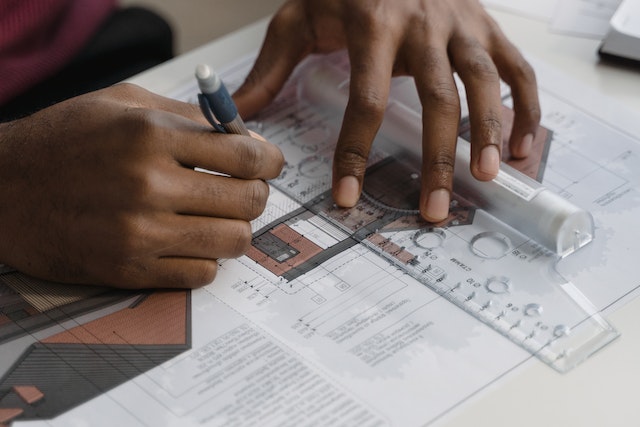Join us as we explore Otto Wagner’s architectural genius, a visionary who shaped modern design. His unique approach and distinctive design inspire future architects and enthusiasts from Vienna and beyond. Join us as we explore Otto Wagner’s incredible legacy, whether you’re an architecture expert or just interested about this intriguing area. His timeless masterpieces will amaze you!
Who Was Otto Wagner?
The famous Austrian architect and urban planner Otto Wagner was born in Vienna in 1841. He is considered a pioneer of modern architecture and shaped the architectural landscape of his own city and Europe.
Wagner’s youth was filled with art and design admiration. His path redefined architectural rules and challenged old assumptions after graduating from the Vienna Academy of Fine Arts.
Wagner’s style was defined by clean lines, geometric forms, and inventive use of iron and glass. His designs combined functionality and aesthetics to create beautiful and functional spaces.
Wagner envisioned overall urban planning as well as individual buildings. He thought cities should have green places and efficient transit to meet residents’ demands.
He revolutionised late 19th-century architecture with his avant-garde concepts. He is still revered as an architectural pioneer whose ideas affect modern design.
Otto Wagner, a multidimensional architect who pioneered modern architecture, dared to dream big and left an unforgettable mark on history.
Style of His Architecture
Modern architecture pioneer Otto Wagner had a groundbreaking style. He designed with clean lines, simplicity, and functionality. Wagner believed in combining art with pragmatism, creating structures that were both functional and beautiful.
His material utilisation is prominent in his architecture. Wagner adopted glass and steel technology for increased design and construction flexibility. His Postal Savings Bank building in Vienna has a remarkable exterior made of concrete, marble, ironwork and glass.
Wagner’s meticulousness is another trait. He meticulously designed his buildings, from the overall form to the smallest decorative elements. This craftsmanship is evident in the Majolikahaus apartment building’s elaborate ceramic tilework and the Church at Steinhof’s finely designed interiors.
Wagner sought harmony between structures and their surroundings in his architecture. He felt building should integrate with its surroundings rather than dominate it. This attitude is seen in projects like the Karlsplatz Stadtbahn Station, which incorporates plants.
Otto Wagner’s architecture was known for its clean lines, utility, new materials, attention to detail, and seamless integration with surrounds.His innovative approach inspires architects today and makes him one of history’s most significant individuals in modern architecture.By examining his works, we can learn how timeless design ideas can improve our built environment today.
Taschen design books
Taschen design books are treasure troves for architecture and design lovers. These books provide a unique look into Otto Wagner and other architectural geniuses through striking graphics, intelligent texts, and high-quality production.
taschen design books are known for their meticulousness. Each page is meticulously selected to present both the finished architectural wonders and the intricate sketches, blueprints, and images that reveal the creative process.
Taschen’s library covers an incredible breadth of themes. Everyone can find something they like, from Otto Wagner monographs to architectural trend and style surveys. Find a book that suits your tastes, whether you like Art Nouveau or Modernism.
Taschen design books also explore the historical context of each project, in addition to attractive photos. Readers can learn how Otto Wagner’s designs influenced his contemporaries and architects today through entertaining storytelling and expert analysis.
Taschen design books are noted for their high-quality printing and insightful content. The rich colours pop off the paper while faithfully capturing an architect’s vision. This attention to detail gives readers a realistic experience while flicking through these wonderfully produced volumes.
For architects seeking inspiration or those who value great craftsmanship, taschen design books are a must-have.
They educate and amuse readers with a visual tour of history’s greatest architectural feats.
Why not read one or more of these interesting books?
Otto Wagner is known for his breakthrough architectural designs that changed the world of architecture. Let’s examine some of his most famous works that still inspire architects and designers.
The Vienna Majolikahaus is an Otto Wagner masterpiece. Wagner’s meticulous porcelain tilework decorates this Art Nouveau edifice. The façade’s curving contours, flowery embellishments, and brilliant colours impress everyone.
The Vienna Postal Savings Bank is another Wagner masterpiece. Wagner’s modernist style is evident in this building’s white façade and geometric shapes. Glass and metal give it a light, sturdy feel.
Wagner’s Church of St. Leopold am Steinhof in Vienna is famous worldwide. The Romanesque Revival and Secessionist style of this stunning building merge history and innovation.
The Viennese Stadtbahn stations demonstrate Wagner’s talent. These elevated railway platforms have magnificent ironwork arches with artistic features that turn mundane transit hubs into beauty.
Wagner also designed public places like Schönbrunn Park and Karlsplatz Square, which contributed to urban planning.
Otto Wagner’s ability to blend form and function and incorporate art into ordinary architecture is his legacy. One of the most important architects in history, his creative style inspires architects worldwide.
His Influence on Architecture Today
The field of architecture is still influenced by Otto Wagner. His inventive ideas, ahead-of-his-time designs, and focus on functionality have shaped building design.
Wagner’s emphasis on art-architecture integration had a major influence. He thought structures should be both functional and beautiful. This approach has impacted many architects who want to build useful and attractive structures.
Wagner was also pioneering in using new materials in his designs. He experimented with iron, glass, and concrete to challenge traditional architecture. This forward-thinking approach has allowed modern architects to experiment with new materials and construction methods.
According to Wagner, Gesamtkunstwerk (complete work of art) has considerably influenced modern architecture. In order to produce a harmonious building, he thought that every part should be thoroughly studied, from structure to interior furnishings. Modern architects work together with interior designers, landscape architects, and other experts to ensure a unified vision across a project due to this holistic approach.
Along with these lasting influences on architectural theory and practise, Wagner’s works are mirrored in modern buildings worldwide. Clean lines, geometric forms, and minimal decoration are commonly found in his creations.
Otto Wagner was a visionary architect whose creativity lives on today. His pursuit of form-function harmony inspires architects worldwide. As we drive design innovation and embrace sustainable practises, we must remember Otto Wagner, who founded modern architecture. Studies of his work can provide significant insights.






